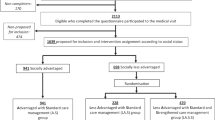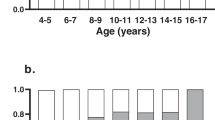Abstract
Obesity has become one of the major health burdens of the westernized world with an increasing number of people affected at any age. Although genetic factors explain around 40% of individual susceptibility to the disease, obesity may and should be controlled through interventions on the individual behaviour and on the social environment. Very promising to this aim is the role of prevention. Several levels of action have been established as well as different types of interventions according to the targeted population. Of special importance is the contention of childhood obesity with home and school as privileged settings for intervention. Despite a general acknowledging of the urgency for effective preventive measures at social, economic and political level to contrast the increasing prevalence of obesity, no clear nationwide policies have yet been established, and the educational and public health measures adopted so far lack that coordination and integration that the magnitude of the situation requires.
This is a preview of subscription content, access via your institution
Access options
Subscribe to this journal
Receive 12 print issues and online access
$259.00 per year
only $21.58 per issue
Buy this article
- Purchase on Springer Link
- Instant access to full article PDF
Prices may be subject to local taxes which are calculated during checkout
Similar content being viewed by others
References
Bouchard C, Pérusse L, Rive T & Rao DC . (1998): The genetics of human obesity. In Handbook of Obesity, eds GA Bray, C Bouchard & WPT James, pp 157–190. New York: Marcel Dekker.
Eckel R & Krauss R (1998): American Heart Association calls to action: obesity as a major risk factor for coronary heart disease. Circulation 97, 2099–2100.
Epstein LH, Valoski A, Wing RR & Mc Curley J (1990): Ten years follow-up of behavioural family-based treatment for obese children. JAMA 264, 2519–2523.
Filozof C & Gonzalez C (2000): Predictors of weight gain: the biological-behavioural debate. Obes. Rev. 1, 21–26.
Hill JO & Billington CJ (2002): Obesity: the time has come. Am. J. Hyperters. (Ed.Esp.) 4, 598–600.
Jeffrey RW (1998): Prevention of obesity. In Handbook of obesity, eds GA Bray, C Bouchard, WPT James, pp 819–829. New York: Marcel Dekker.
Kumanyika S, Jeffrey RW, Morabia A, Ritenbaugh C, Antipatis VJ : Public Health Approaches to the Prevention of Obesity (PHAPO) Working Group of the International Obesity Task Force (IOFT) (2002): Obesity prevention: the case for action. Int. J. Obes. Relat. Metab. Disord. 26, 425–436.
Lew EA & Garfinkel L (1979): Variations in mortality by weight among 750,000 men and women. J. Chronic Dis. 32, 563–576.
Livingstone B (2000): Epidemiology of childhood obesity in Europe. Eur. J. Pediatr. 159, 14–34.
Resnicow K (1993): School-based obesity prevention population versus high-risk interventions. Ann. NY Acad. Sci. 699, 154–166.
SEEDO (2000): Consenso SEEDO 2000 para la evaluación del sobrepeso y la obesidad y el establecimiento de criterios de intervención terapéutica. Med. Clin. (Barc) 115, 587–597.
Seidell JC, Verschuren WM, van Leer EM & Kromhout D (1996): Overweight, underweight, and mortality. A perspective study of 48,287 men and women. Arch. Intern. Med. 156, 958–963.
Serra Majem L & Aranceta J (2001): EnKid study (1998–2000). Masson: Barcelona.
Spanish Health and Education Ministries and Madrid Autonomous Community (1994–95): ‘Education for health in school’ program, Ordenes 555/1994 de 22 de Junio y 65/1995 de 23 de Enero.
Story M (1999): School-based approaches for preventing and treating obesity. Int. J. Obes. Relat. Metab. Disorda 23 (Suppl 2), S43–S51.
World Health Organization (1998):Obesity—preventing and managing the global epidemic. WHO Consultation on Obesity Report, Geneva.
World Health Organization (2000): Obesity—preventing and managing the global epidemic. WHO Technical Report Series 894, Geneva.
World Health Organization—MONICA project (1998): Geographical variation in the major risk factors of coronary heart disease in men and women aged 35–64 years. World Health Stat. Quart. 41, 115–140.
Author information
Authors and Affiliations
Contributions
Guarantor: R Carraro.
Contributors: RC is the main author of this report and wrote the manuscript, whereas MGC contributed to the data presentation and discussion, as well as in the bibliographical search
Corresponding author
Rights and permissions
About this article
Cite this article
Carraro, R., Cebrián, M. Role of prevention in the contention of the obesity epidemic. Eur J Clin Nutr 57 (Suppl 1), S94–S96 (2003). https://doi.org/10.1038/sj.ejcn.1601808
Published:
Issue Date:
DOI: https://doi.org/10.1038/sj.ejcn.1601808
Keywords
This article is cited by
-
Effect of an individually tailored one-year energy balance programme on body weight, body composition and lifestyle in recent retirees: a cluster randomised controlled trial
BMC Public Health (2010)
-
Study protocol of a cluster randomised controlled trial investigating the effectiveness of a tailored energy balance programme for recent retirees
BMC Public Health (2006)
-
Netherlands Research programme weight Gain prevention (NHF-NRG): rationale, objectives and strategies
European Journal of Clinical Nutrition (2005)
-
Women of higher socio-economic status are more likely to be overweight in Karnataka, India
European Journal of Clinical Nutrition (2005)



